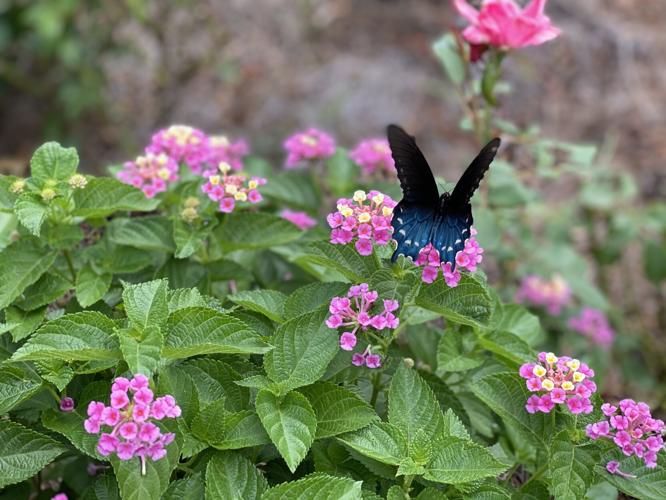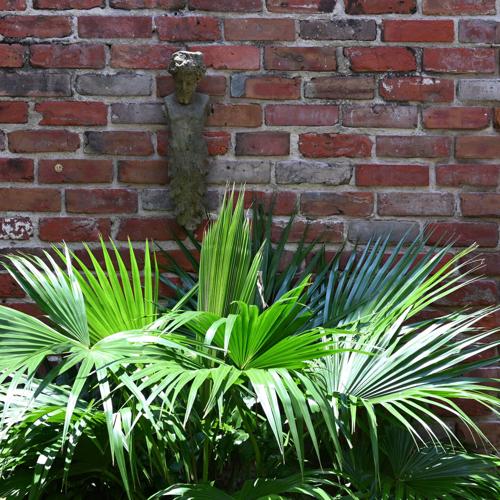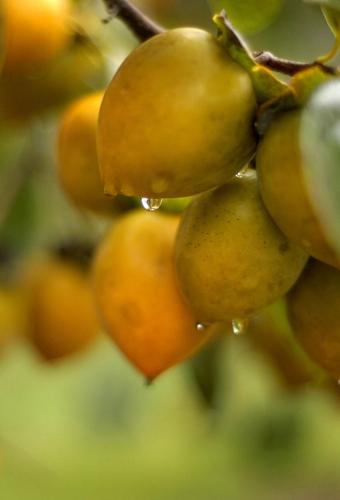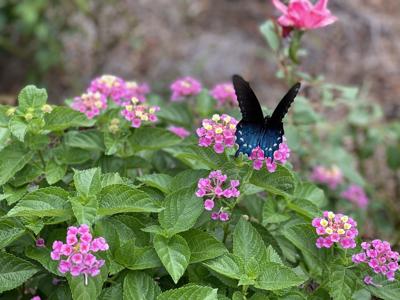Garden columnist Dan Gill answers readers' questions each week. To send a question, email Gill at dgill@agcenter.lsu.edu.
I have about nine lantanas of varying sizes in different beds and locations in my yard. I garden for butterflies, so I avoid pesticides. I have four lantanas in different beds that are infested with lantana lace bugs. What can I use? Should I cut them way back? If I replace them with newer Bandana varieties, will I be wasting my time? Do you have any suggestions for another similar type of nectar plant? — Nada Bashir
Lantana lace bugs are the most common and destructive pest of this otherwise carefree and reliable plant. Symptoms start off with the plant suddenly stopping blooming. Then you notice white spots and patches in the foliage. Eventually, the foliage starts turning tan, and the plants take on a scorched appearance.
To control the lantana lace bugs, cut back the plants back and spray with a light horticultural oil (Year-Round Spray Oil and other brands). Cutting the plants back and disposing of the trimmings (bag them and throw away) will help reduce or eliminate the current lace bug population. And the horticultural oil spray will help wipe out what is left. As the plants grow, spray occasionally with the light horticultural oil getting thoroughly under the leaves.
Horticultural oils are not toxic to butterflies that may visit the flowers to collect nectar. Just be sure you do not spray butterflies directly with the horticultural oil spray and it will not hurt them.
Bandana lantanas are not immune from lace-bug infestation and could also be attacked if you switched. If you decide to plant a different nectar plant that does not have the insect problems that lantana can have with lace bugs, you might consider pentas. The Butterfly series of pentas comes in various colors. It is relatively compact growing and is among the pentas most attractive to butterflies. But any variety of pentas will work.

A number of persimmon cultivars are available.
What is the common persimmon to get from the nursery? — Rob Hertling
The persimmon trees you will find at local nurseries is the Japanese persimmon — Diospyros kaki. You should find more than one Japanese persimmon cultivar, such as Tanenashi, Fuyu, Eureka, Suruga and others. Write down the names of the cultivars available at your local nurseries and take the list home. Do an internet search of each of the cultivars to see their characteristics, and then choose the one you think best fits what you are looking for. You only need one persimmon tree — they are self-fruitful. Fall through early winter is an excellent time to plant persimmons and other hardy fruit trees, shrubs and vines.
I keep seeing bugs on my milkweed plants. They are orange and black and shaped like a dome (they are not ladybug beetles), and they are chewing up the leaves. Should I destroy this milkweed-eating critter? — Mimi
This is the swamp milkweed beetle. You should collect and destroy any of these bugs you can. They eat the foliage of the milkweed plants (butterfly weed). Most of us would prefer the foliage be eaten by monarch butterfly caterpillars — this is a main reason most of us plant milkweed. So, hand pick and destroy any swamp milkweed beetles you can. There are no insecticides you could use to control these beetles that would not have a negative impact on the butterflies.
Are there any peonies that can grow with success in New Orleans? — Jessie Collins
Unfortunately, our winters are too mild for long-term success with peonies. You may sometimes see peonies recommended for the South, but they are for the mid- to upper South. Gardeners in north Louisiana do have decent success with peonies.

A fan palm dresses up a courtyard.
Garden tips
PALMS NOW: Plant palms during the summer through August, as they establish best when planted into warm soil. Select hardier palms such as cabbage palm, windmill palm, Mediterranean fan palm, Canary Island date palm, date palm, palmetto and needle palm. Keep them well-watered while they become established.
A LITTLE LAGNIAPPE: After planting bedding plants, water them in with a half-strength solution of your favorite water-soluble fertilizer. This gets them off to a good start.
THINK SMALL: When buying pesticides, ask for a recommendation for the least toxic material that will do the job and buy the smallest container available. Large containers take years to use up, and by then the pesticide has often lost its effectiveness.
LAWN ATTACK: Chinch bugs, which are most damaging during hot dry weather, often begin to show up in late June and July. Look for new irregular dead areas that enlarge fairly rapidly. The grass will have a dry, straw-like appearance. Treat with 0ermethrin, bifenthrin, cyfluthrin or other labeled insecticides to prevent extensive damage. Follow label directions carefully.
TIME FOR A TRIM: Cut back early summer-flowering perennials in the garden when they finish flowering to keep the plants looking attractive and, in the case of some perennials, encourage more flowering.






